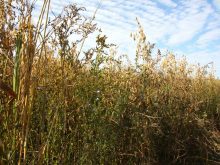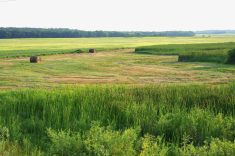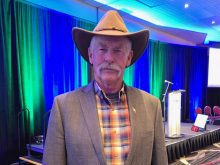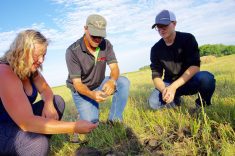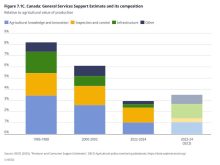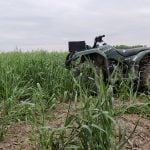With the rising costs of inputs and more scrutiny of nitrogen emissions, farmers could find the ESR framework a useful tool to transition to a less intensive, less input-dependent model.
ESR stands for efficiency, substitution and redesign. The framework was developed in Australia in the 1990s as a method to move from input-intensive conventional agriculture to a more ecologically based form of farming.
Joel Williams, independent plant and soil health scientist and principal of Integrated Soils, spoke to audiences at the Manitoba Association of Watersheds conference in December.
Read Also

Protecting the farm from crime
From better lighting to cameras to reporting to police, here are some things farmers can do to reduce their crime risk.
He describes ESR as a way to think about moving agriculture further toward sustainability through methods that work with natural systems to harness ecosystem services and focus both on the goal of food production.
“It’s really that simple,” says Williams. “How can we produce food and take care of the ecology and the ecosystems at the same time?”
Because the framework can be applied incrementally, it could be an attractive alternative for farmers who may want to dip their toes in the pool of regenerative agriculture but are unsure they’re ready to take the plunge.
Williams says he thinks more and more conventional farmers are milling around the edge of that swimming pool.
“One of the interesting things that’s happened in recent years is the traditional divide that used to be there between organic and conventional farmers seems to have melted into the middle.” Williams says it’s hard to tell conventional farmers from their organic counterparts at soil health events he’s attended in recent years.
“They’re all asking the same types of questions and trying to understand soil health. I believe there is some kind of hybrid between these two worlds.”
The ESR framework could add structural support to the bridge being built between the two camps. It serves as a guide for farmers on what actions to take while also serving as a gauge of progress. It blends practicality and efficiency with forward thinking and redesign.
“We’re seeing a lot of overlap now, and I think that’s a very good and exciting time in agriculture,” says Williams.
In fact, many conventional farmers are well on their way. With the high cost of inputs, most farmers are already striving for greater efficiency. Many are familiar with the 4R concept for fertilizer applications: right source, right rate, right time and right place.
“We use split fertilizer applications, focusing on fertilizer placement – spoon feeding the plants – and trying to be more targeted with the inputs that we do use,” says Williams.
“As we become more efficient, our reliance on those inputs becomes less and less, to the point where we could potentially substitute for those inputs” with alternatives like biofertilizers.
The redesign phase is where the farmer really has to take the plunge.
“Here, we really are redesigning the farming system,” says Williams. Typically, this means system changes with biodiversity in mind and transitioning away from monocultures.
“That could be through novel crops and wider rotations, but also through other things like companion intercropping or diverse pasture stands, for example,” he says.
This is where the framework becomes indistinguishable from regenerative agriculture.
Williams says he is open to the idea of incrementalism, because “slow change is better than no change.” But he also says it’s important not to let the process stall.
He notes that if a farmer has reduced inputs to zero and replaced them with biologicals, it’s positive but it’s really just an ultra-efficient monoculture.
“If we really want to improve ecological outcomes, including water health and water quality, etc., we need to think more about the redesign part.”




